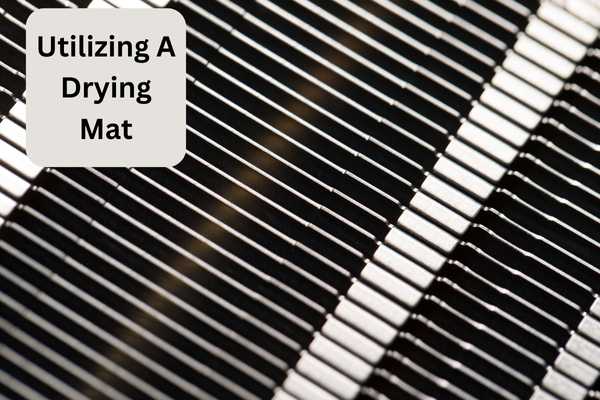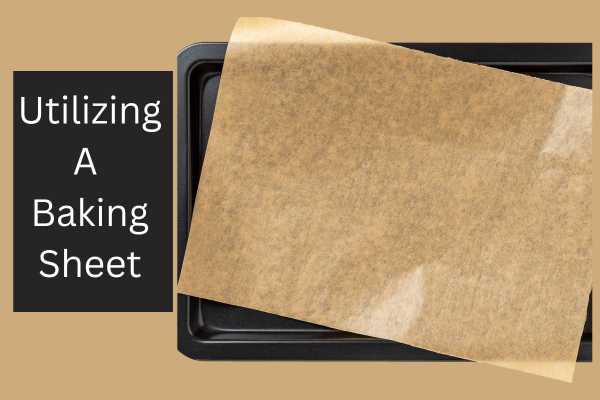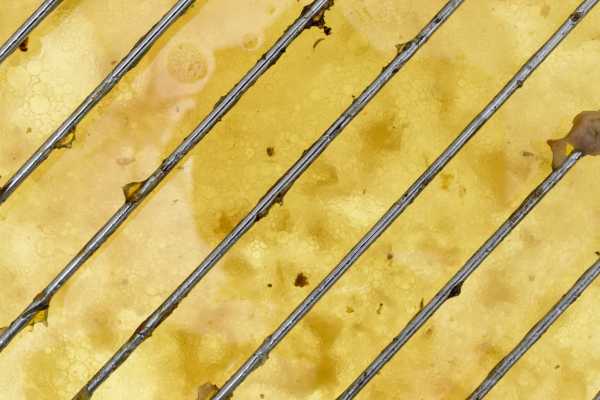Drying dishes without A dish rack may seem like A challenge at first, But it’s not only possible, But it can also be quite simple with A few creative solutions. This task can Be completed using common household items or even through techniques that require no additional tools. These methods will not only help you manage your dishes after washing but could also potentially save you space and time. Let’s dive into the details And explore the various ways you can effectively dry your dishes without the need for A dish rack.
Why Should You Try Other Alternative Ways For Drying The Dishes?

There are several reasons why you might want to try alternative ways for dry dishes, Firstly, a dish rack can take up A significant amount of counter space, Which could be better utilized in smaller kitchens or when you’re preparing large meals. Secondly, exploring alternative drying methods can lead to more efficient and hygienic practices, reducing the chance of bacterial growth that can occur in stagnant water on a dish rack. Furthermore, it can save you money as you won’t need to purchase a dish rack, and it’s also more sustainable and environment-friendly as it requires fewer resources. Lastly, using these alternatives can provide you with a workaround solution during emergencies, such as when your dish rack is full, or damaged, or when you’re away from home.
What To Use Instead Of A Dish Rack?
1. Using A Microfiber Towel

A microfiber towel is A great alternative to A dish rack because Of its high absorbency and quick-drying properties. To use this method, spread the microfiber towel out on a flat, clean surface near your sink. As you wash each dish, lay it on the towel. The towel will absorb the excess water, and the dishes will air-dry relatively quickly. Once all dishes are dry, hang up the towel to allow it to dry as well, preventing any mold or mildew from forming.
2. Utilizing A Drying Mat

Drying mats are another great tool for dry dishes without a dish rack. These mats are usually made of microfiber Or other absorbent materials And are designed to sit on your countertop. They’re easy to clean, and store and have high absorbency. To use, simply lay the mat out on your countertop and place your washed platters on top. They can handle A good number Of dishes and cutlery, and when you’re done, simply fold it up and store it away.
3. Employing A Dish Towel Or Paper Towels

Dish towels or paper towels can serve as a cost-effective and space-saving alternative to dish racks. Lay A clean dish towel or A few layers of paper towels flat on the counter, then place the freshly washed platters on top. This method is quite simple but effective, although it may require regular changing of the towel or paper towels to ensure they don’t become overly wet and start to drip, which could lead to a mess on your counters.
4. Harnessing Gravity With A Sloped Surface
Using a sloped surface can aid the drying process by allowing excess water to run off the dishes rather than pool around them. This can be as simple as propping one end of your drying mat or towel up to create an incline, or you could use a large baking sheet with a lip. Place the higher end near the sink, and as you wash your dishes, place them on the lower end of the slope to help the water drain away.
5. Using A Cooling Rack

A cooling rack, like the ones used for cooling baked goods, can work as a makeshift dish rack. Put a towel or drying mat underneath to catch the water, then, place your washed dishes on the cooling rack. It’s a great space-saver and, because it’s designed to circulate air, it can dry your platters quickly.
6. Hanging Dishes To Dry

If you have items with a hole or loop in the handle like mugs or certain types of cutlery, consider hanging them up to dry. You can use hooks attached to the underside of your kitchen cabinets, or if you’re feeling creative, even a clothes drying rack. The key is to make sure the dishes are hanging over a sink or a towel to catch any drips.
7. Air Drying

This is arguably the simplest method of all. After washing And rinsing your dishes, Shake off any excess water and simply leave them on A clean, dry surface to air dry. This method might take a bit longer than others, and you’ll need to make sure the platters aren’t stacked or touching to allow air to circulate freely, but it requires no extra equipment and is completely free!
8. Using A Pegboard

A pegboard can be a creative and effective tool for drying platters. Install the pegboard on a wall near your sink, then hang your platters , pots, and pans on it to dry. This can help save valuable counter space, and by attaching a towel or drying mat beneath the pegboard, you can ensure no water drips onto your floor. Plus, it can double as storage when not in use for drying dishes.
9. Drying Dishes With A Clothesline

You can create a makeshift dish-drying station using a clothesline, especially for utensils, mugs, or anything else that can hang. Simply string a clothesline in your kitchen or utility area and hang the items on it. Be sure to place a towel or mat underneath to catch drips, and remember, this method works best in a warm or sunny spot to speed up the drying process.
10. Utilizing A Baking Sheet

A baking sheet can also serve as a useful tool for drying dishes. Tilt a baking sheet on your countertop so that one edge is higher than the other, creating a slope. After washing your dishes, Place them on the baking sheet with the lip Of the sheet near the sink. The slope allows the water to drain away from the dishes, helping them dry faster.
11. Trying The Stacking Method
This involves stacking your dishes in a way that allows air to circulate around each one, aiding the drying process. Start with larger items like pans and cutting boards, leaning them against each other at an angle to allow water to drip off. Then, stack smaller items like plates and bowls in an upright position. Ensure that the items aren’t stacked too tightly together and that there’s a towel or mat beneath to absorb any drips.
12. Making Use Of Silicone Drying Mats

Silicone drying mats are an excellent tool for drying platters, thanks to their non-slip properties and heat resistance. They come in different shapes and sizes, and their raised designs help to promote air circulation around your dishes, speeding up the drying process. Silicone is also easy to clean and dries quickly.
13. Utilizing Magnetic Hooks
If you have a magnetic refrigerator or other metal surfaces, consider using magnetic hooks. Hang pots, pans, mugs, and utensils with holes in the handles. This method is great for freeing up counter space, and magnetic hooks can be easily moved or stored when not in use.
14. Using A Wire Rack

Wire racks, often used for cooling baked goods, can also be repurposed to dry dishes. Their design allows for good air circulation, Which can help speed up the drying process. Place a towel underneath to absorb any excess water.
15. Employing A Collapsible Dish Drainer
If you’re short on space but still want the convenience of a dish rack, consider a collapsible dish drainer. These can be expanded when needed, then folded away for storage when not in use. They’re usually made Of durable materials like silicone Or plastic, making them easy to clean.
16. Utilizing The Dishwasher For Drying

If you have a dishwasher, you can make use of its heated drying function. After the wash cycle is complete, open the door To let out the steam, Then leave the door slightly ajar to let the dishes air-dry. Some modern dishwashers even have a specific ‘dry only’ setting which uses heated air to dry your dishes. This can Be A great time-saving option, especially if you have A large number of dishes to clean.
What Tips Should You Follow To Dry Dishes?

- Wash Thoroughly: Ensure your dishes are washed thoroughly to prevent any food residue from remaining on them. This is not only important for hygiene reasons but also aids in the drying process as water can drain off more efficiently.
- Shake off Excess Water: After washing your dishes, shake them a bit to get rid of excess water. This helps to speed up the drying process and prevents water from pooling at the bottom of your dish drying setup.
- Use Heat: Heat speeds up the evaporation process. If it’s a sunny day, you can leave your dishes near a window to dry. Alternatively, using the heated dry setting on your dishwasher can be helpful.
- Ensure Proper Air Circulation: Proper air circulation is vital to quickly dry your dishes. Try not to overcrowd your dishes and ensure there is space between each item to allow air to circulate.
- Clean Your Drying Materials: Whatever you’re using to dry your dishes, Be it a towel, A mat, or A cooling rack, ensure it’s clean to prevent bacteria growth. It’s also important to allow these materials to dry completely before storing them away to prevent mold and mildew.
- Use Vertical Space: Utilize vertical space where possible. This might involve hanging dishes or using stacking methods. This not only helps in air circulation but also saves valuable counter space.
- Dry Cutlery Handle Down: When drying cutlery, place the handle down. This allows any water to run down and off the utensil rather than pooling in the handle.
- Prioritize Drying Order: Items that hold water, like cups and bowls, should be dried first. Flat items like plates and cutting boards can dry while standing up, so they can be left for last.
- Dry Immediately: To prevent the growth of bacteria, It’s best to dry dishes as soon as possible after washing. The longer they sit wet, the more likely they are to breed bacteria.
- Use Safe Products: Whatever method you use, ensure it’s safe for your dishes. For instance, not all dishes are safe to be dried in an oven or dishwasher. Always check the manufacturer’s instructions.
The Final Thoughts
Drying dishes without a dish rack is not only feasible but can also be a practical and space-saving solution. There’s an abundance of alternative methods to choose from, be it using household items like microfiber towels, cooling racks, or baking sheets, or employing creative strategies like using a pegboard, a sloped surface, or even a clothesline. Depending on your kitchen space, Your available tools, And your personal preferences, You can mix And match these methods To find the one that works best for you. As long as you ensure proper washing, shake off excess water, ensure air circulation, and prioritize drying to prevent bacteria growth, your dishes will be clean and dry, ready for their next use.
